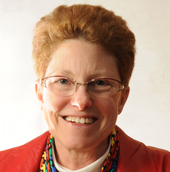Efforts to prevent, identify and respond to children and adolescents who are victims of commercial sexual exploitation and sex trafficking are largely under supported, inefficient, uncoordinated and unevaluated, according to a report released last week by a committee of the Institute of Medicine (IOM).
The IOM committee is co-chaired by Vanderbilt University Medical Center’s Ellen Wright Clayton, M.D., J.D., Craig-Weaver professor of Pediatrics and professor of Law who chairs the Institute of Medicine’s (IOM) Board on Population Health and Public Health Practice.

“A lot of attention has been paid to commercial sexual exploitation and sex trafficking of minors abroad, but much less attention has been paid to the very serious harm that is inflicted on the many children who become victims in the United States,” Clayton said. “The purpose of this report is to bring this issue into the light and to identify ways to prevent these crimes and to assist those who become victims.”
Clayton said it is difficult to specify how many children are exploited because these crimes take place on the margins of society, usually behind closed doors.
Warning signs that children are being exploited in this way include: change in behavior, being homeless, drug use, being accompanied by an unrelated adult for health care visits, sexually transmitted infections and pregnancy.
Clayton said that besides punishing exploiters, traffickers and those who purchase sex with minors, the public needs to be educated, especially adults who interact with young people and minors themselves.
Effective screening tools also need to be developed that might identify young people before they become involved.
“We must also ensure that victims are not prosecuted as criminals, but rather are directed to effective, multisector care to help them recover from the trauma of this abuse,” she said.















